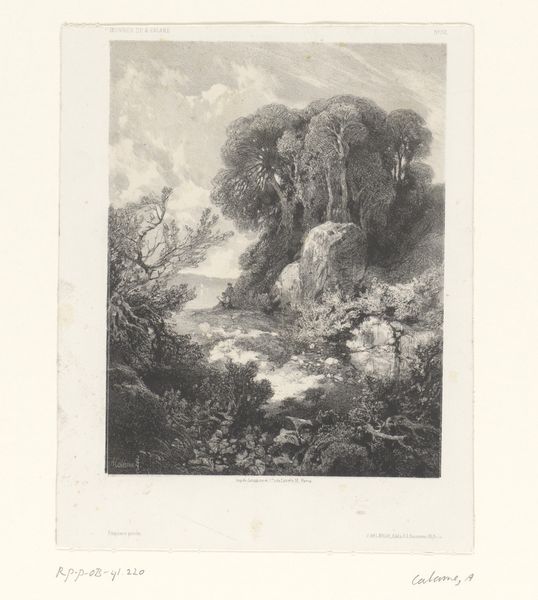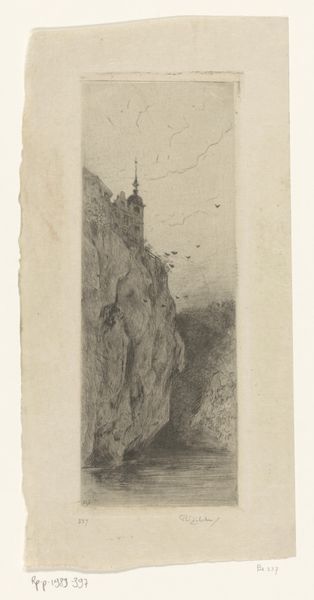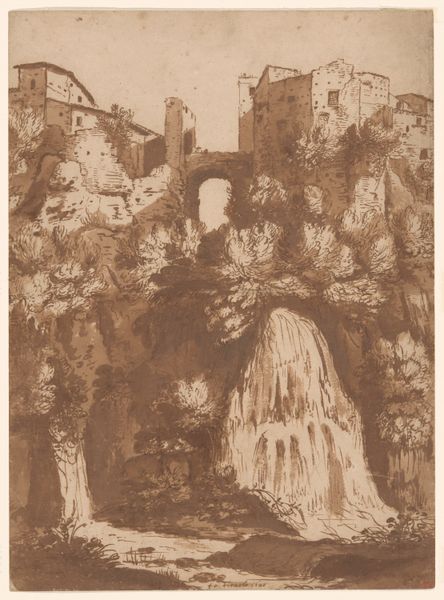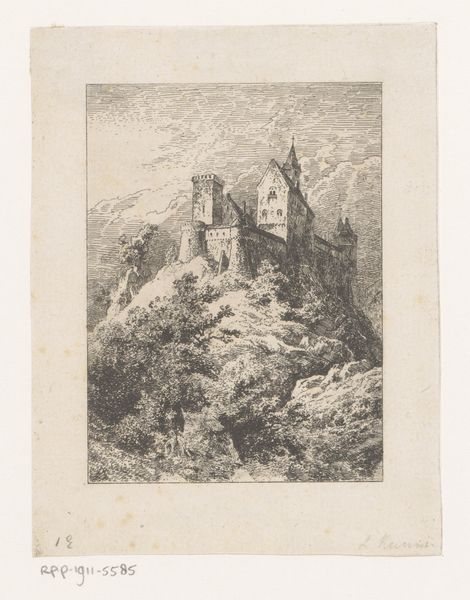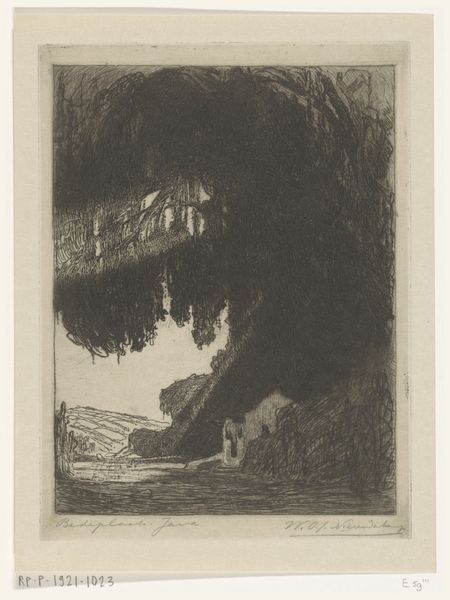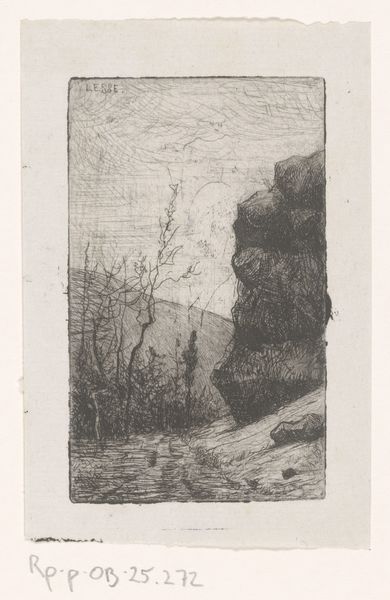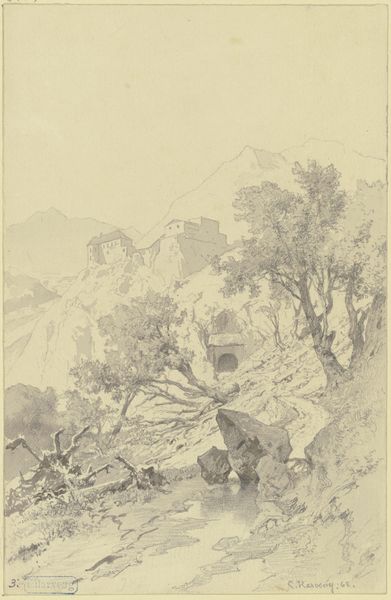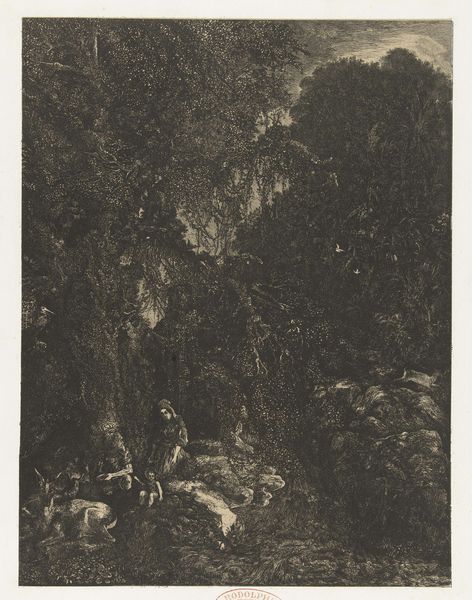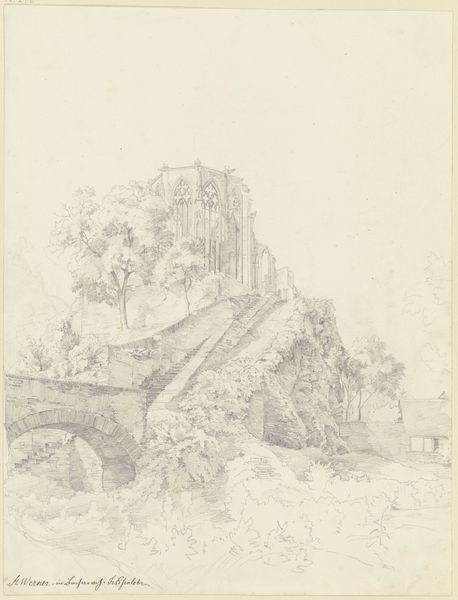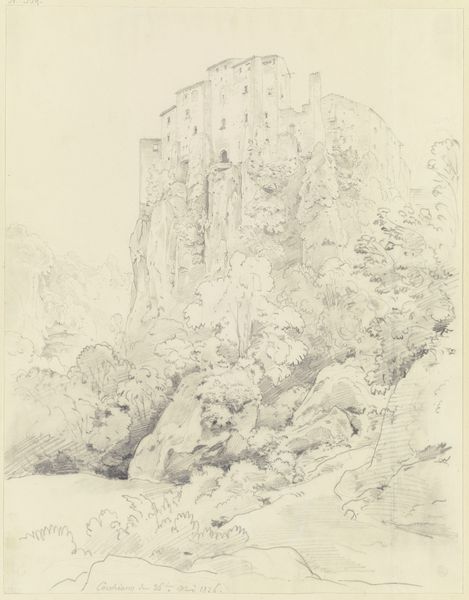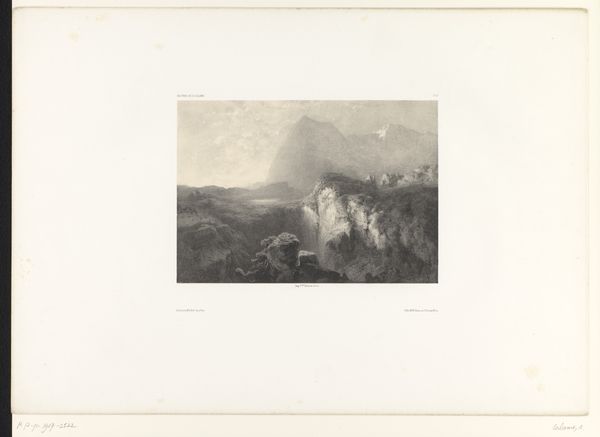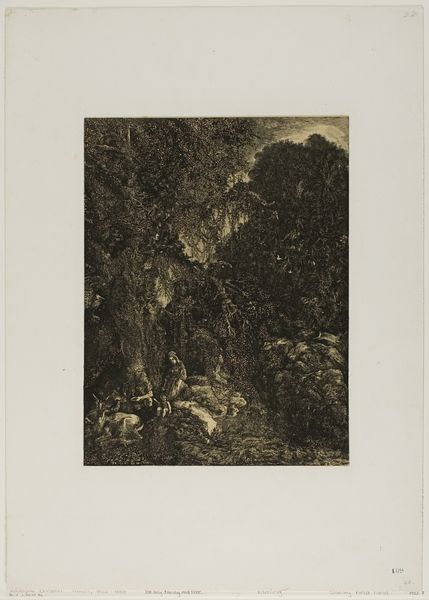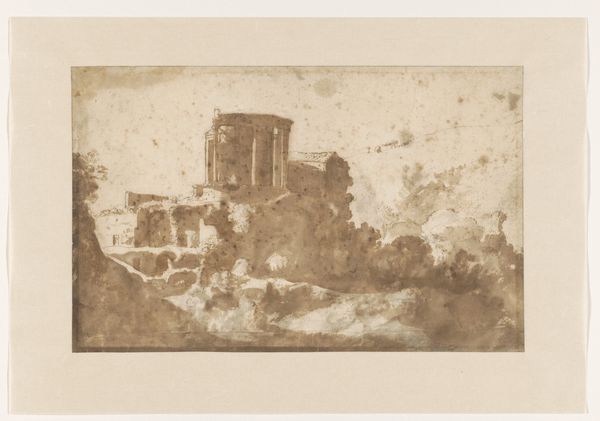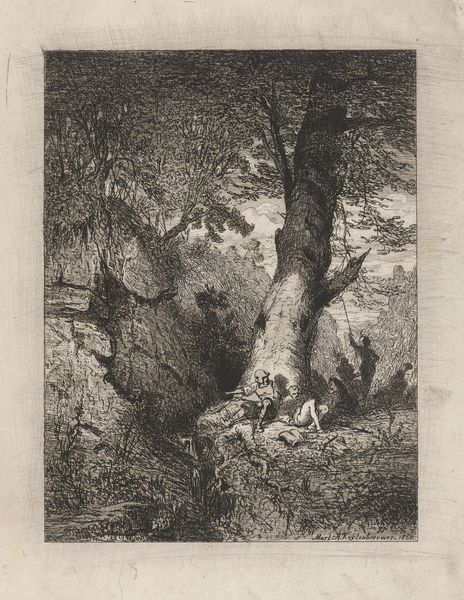
Dimensions: height 294 mm, width 219 mm
Copyright: Rijks Museum: Open Domain
Editor: Here we have Alexandre Calame’s pencil drawing, "Landschap met ruïne en rustende figuur", dating from before 1855. It's incredible how much detail he achieves with just pencil on paper! The landscape almost feels monumental despite its intimate scale. What's your perspective on this piece? Curator: What interests me most is how Calame uses such a humble medium to engage with Romantic ideals. Think about the labor involved in producing graphite—mining, processing, shaping—all so that an artist can recreate an idealized vision of nature. And consider the social context: the rise of industrialization was concurrent with the romantic fascination for nature as it faded away in people's lives. The material itself, and its accessibility, allowed the rising middle class to produce images like this. Editor: That’s fascinating. I hadn't considered the accessibility aspect before. Do you think the figure within the landscape influences the message? Curator: Absolutely. The figure's inclusion connects the work to history-painting traditions but transforms them. They're dwarfed by the ruin and the landscape. Calame suggests that materials, both the earth and the man-made graphite, can outlast any individual's impact. It speaks to an industrial-era anxiety about nature, decay, and individual insignificance, anxieties which created a need for idealized and, in some way, possessable views of nature. Editor: So, it's almost as if the drawing's material reality reflects and reinforces its thematic concerns? Curator: Precisely. The pencil marks themselves become a metaphor for the relationship between human industry, natural beauty, and historical decline. By choosing pencil, he chooses a readily accessible tool. How does mass production democratize the consumption and experience of Romanticism itself? Editor: I see what you mean! The materials really shape how we understand the piece, its social context, and how that feeds back into its meaning. It definitely gives me a lot to think about.
Comments
No comments
Be the first to comment and join the conversation on the ultimate creative platform.
